جلد سخت سیاه و سفید
Product details
- Publisher : Oxford University Press (July 5, 2022)
- Language : English
- Hardcover : 560 pages
- ISBN-10 : 0197551858
- ISBN-13 : 978-0197551851
کتاب Singing the News of Death: Execution Ballads in Europe 1500-1900 (New Cultural History of Music)
Across Europe, from the dawn of print until the early twentieth century, the news of crime and criminals' public executions was printed in song form on cheap broadsides and pamphlets to be sold in streets and marketplaces by ballad-singers. Singing the News of Death: Execution Ballads in Europe 1500-1900 looks at how and why song was employed across Europe for centuries as a vehicle for broadcasting news about crime and executions, exploring how this performative medium could frame and mediate the message of punishment and repentance. Examining ballads in English, French, Dutch, German, and Italian across four centuries, author Una McIlvenna offers the first multilingual and longue durée study of the complex and fascinating phenomenon of popular songs about brutal public death.
Ballads were frequently written in the first-person voice, and often purported to be the last words, confession or 'dying speech' of the condemned criminal, yet were ironically on sale the day of the execution itself. Musical notation was generally not required as ballads were set to well-known tunes. Execution ballads were therefore a medium accessible to all, regardless of literacy, social class, age, gender or location. A genre that retained extraordinary continuities in form and content across time, space, and language, the execution ballad grew in popularity in the nineteenth century, and only began to fade as executions themselves were removed from the public eye. With an accompanying database of recordings, Singing the News of Death brings these centuries-old songs of death back to life.
منابع کتاب کتاب Singing the News of Death: Execution Ballads in Europe 1500-1900 (New Cultural History of Music)
در سرتاسر اروپا، از آغاز چاپ تا اوایل قرن بیستم، اخبار جنایت و اعدام جنایتکاران در ملاء عام به صورت آهنگ بر روی صفحات و بروشورهای ارزان قیمت چاپ می شد تا در خیابان ها و بازارها توسط ترانه سراها به فروش برسد. آواز خواندن اخبار مرگ: تصنیف های اعدام در اروپا 1500-1900 به چگونگی و چرایی استفاده از آواز در سراسر اروپا برای قرن ها به عنوان وسیله ای برای پخش اخبار در مورد جنایت و اعدام می پردازد، و بررسی می کند که چگونه این رسانه نمایشی می تواند پیام مجازات را تنظیم و واسطه کند. توبه نویسنده Una McIlvenna با بررسی تصنیفها به زبانهای انگلیسی، فرانسوی، هلندی، آلمانی و ایتالیایی در طول چهار قرن، اولین مطالعه چندزبانه و طولانی مدت درباره پدیده پیچیده و شگفتانگیز آهنگهای عامه پسند درباره مرگ وحشیانه عمومی را ارائه میدهد.
تصنیفها اغلب با صدای اول شخص نوشته میشدند، و اغلب ادعا میشد که آخرین کلمات، اعتراف یا «سخنرانی در حال مرگ» جنایتکار محکوم است، اما از قضا در روز اعدام به فروش میرسیدند. چون تصنیفها روی آهنگهای معروف تنظیم میشدند معمولاً نتنویسی موسیقی لازم نبود. بنابراین تصنیفهای اعدام بدون در نظر گرفتن سواد، طبقه اجتماعی، سن، جنسیت یا مکان، رسانهای قابل دسترس برای همه بود. ژانری که تداوم فوقالعادهای را در فرم و محتوا در طول زمان، مکان و زبان حفظ میکرد، تصنیف اعدام در قرن نوزدهم محبوبیت بیشتری پیدا کرد و تنها با حذف خود اعدامها از دید عموم شروع به محو شدن کرد. Singing the News of Death با یک پایگاه داده همراه ضبط شده، این آهنگ های چند صد ساله مرگ را زنده می کند.

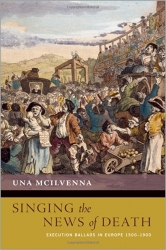
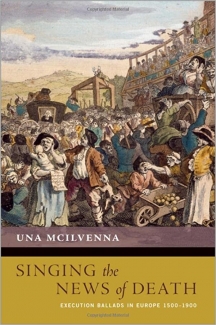
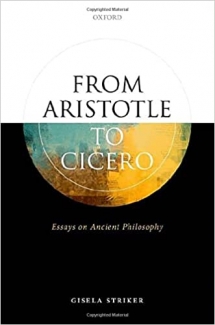



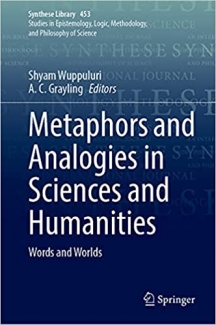
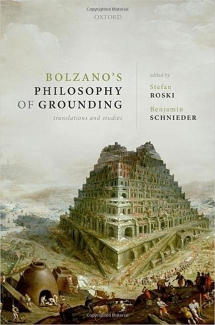

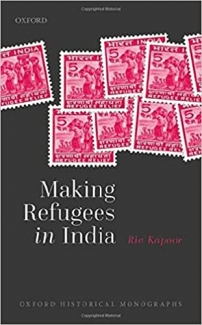





















ارسال نظر درباره کتاب Singing the News of Death: Execution Ballads in Europe 1500-1900 (New Cultural History of Music)